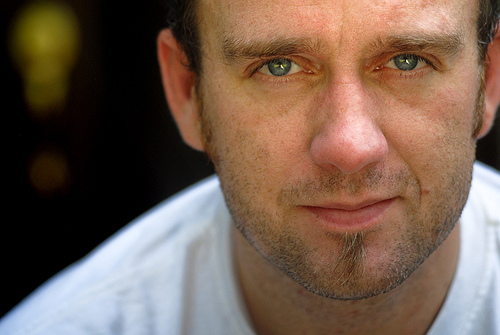How to Take a Cover-Model-Style Portrait
By Karen Walrond of Chookooloonks
1. Make sure your camera has the right lens.
The optimal length of lens to take a nice, tight portrait is 100 mm to 110 mm (don’t worry: even if you’re shooting with a point-and-shoot that has a zoom lens, chances are good that your camera has at least a 100 mm focal length). The reason? If you take a portrait with too short of a lens, you’ll have to get all up in your subject’s grill to get a good, close-up shot (and you probably won’t be able to focus the camera anyway); too long of a lens and you’ll end up having to move so far away to get all of your subject’s head in the shot, you’ll have to yell your instructions to your subject to get them to respond — and really, you don’t actually want to have to shout the words “MAKE LOVE TO THE CAMERA!” It’s unseemly.

2. Find the right place to shoot.
In my opinion, natural light is always the most … well, natural lighting to use when shooting a photograph; the trick is to find the right kind of light. Too little light and your images won’t come out very sharp; too much light, and your subject will look like she’s on fire — not to mention that very few people (other than Clint Eastwood or Jack Nicholson, I mean) look particularly good squinting. Avoid shooting in harsh overhead daylight, or the dark shadow formed under your subject’s nose will make her look like a toucan. My favourite time to shoot? During the Golden Light time — when the light turns that lovely golden hue about a half hour before sunset. Magical.

3. Make sure your subject feels pretty/handsome.
To get a great shot, you want your subject to feel comfortable — and they’re not going to feel comfortable if they feel ugly. Have them choose their own clothes, or do their own hair and makeup if they like. And don’t worry if you’re subject happens to put on her makeup with a putty knife: happily, the camera won’t make it look as garish as it does in real life. So try to keep the involuntary shuddering out of eyesight. Also? It’s always safe have your subject wear a solid colour, rather than a patterned shirt, if only to protect the seizure-prone viewer of your final prints from any … incidents. Quick tip: Everyone looks good in a simple, crisp white shirt. Everyone.

4. Once the subject is in place, look through the viewfinder, and before taking the shot, check out what you see.
Take a look through the camera and scan for anything that looks wrong. Weird shadow? Adjust your subject to minimize accordingly. A drug bust going down in the background? Ditto. And please, for the love of God, check your subject for stray hairs, boogers, the odd piece of broccoli lodged between the incisors — this is no time to be coy. No one likes a boogery, broccoli-filled portrait. Fix it.

5. Have your subject try to look right through the camera lens into your eyes, and squeeze the shutter.
But don’t do it just once — do it lots. In my experience, some of the best shots happen after the subject relaxes. Here’s what I mean: say, for example, you’re shooting your 18-year-old daughter for some natural-looking, high-school-senior shots. She’s all made up, wearing her white shirt, and as soon as you point your camera at her, she affects what you can only assume she feels is her best Keira Knightly pose. You take the shot. Predictably, your son is standing behind you, mocking her, trying to make her laugh. KEEP THE CAMERA AIMED AT HER FACE. She will invariably break down to giggle, scowl, throw a pillow at your son’s head, whatever. That’s when you click that shutter like your life depends on it. I guarantee you you’ll love one of the follow-up shots.

Of course, if all else fails, you can always hire a professional photographer. Then she can worry about the boogers and the broccoli.

